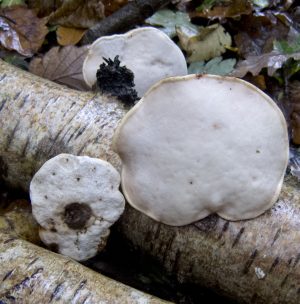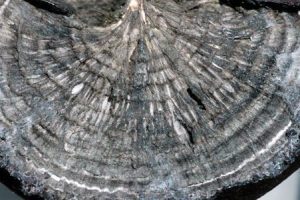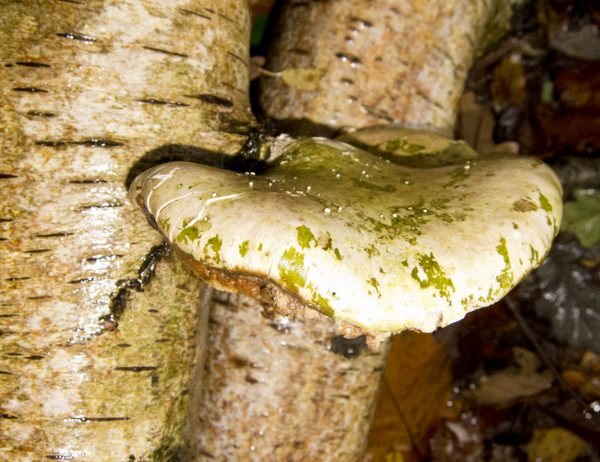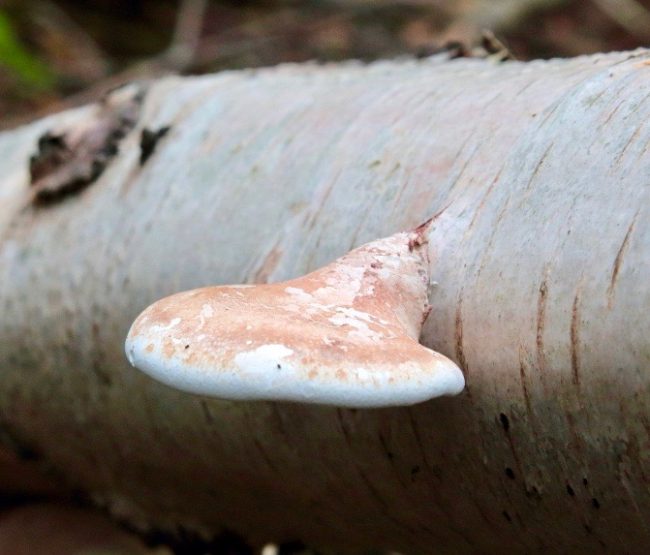“Neolithic mushrooms”

Some years back, the blog talked about a 5000 year old ‘mummy’ - called Otzi. Otzi was a Neolithic man, and was found frozen, high in the mountains between Austria and Italy. Careful examination of his body, clothing and possessions gives us some insights into his daily life and diet. Otzi and, we presume, his contemporaries made good use of the plants and natural materials around them. Thus,
- His bow was made from Yew
- Ash provided his dagger handle
- Woven grass and bast for his cloak (bast is made from the fibres of the linden tree)
- goats hide for his leggings and jerkin,
- bear skin for his cap
- deer skin for shoes
- arrows from a wayfaring tree and dogwood
Interestingly, Otzi carried a copper axe and MRI scans indicated that he died from an arrow wound (in the left shoulder). He also had a small bag or pouch which contained walnut-sized lumps of a fungus.
 Originally, the material was described as tinder from from the tinder polypore [Fomes fomentarius] which can beuseful in starting a fire (rather like King Alfred’s cakes). However, Austrian microbiologists have now identified the fungus as the fruiting body of the birch fungus, Piptoporus betulinus aka Fomitopsis betulina. Both Birch trees and the fungus are common in cold / alpine environments. The fungus is a polypore and a parasite that slowly kills the birch before ‘digesting’ the dead tree until there is nothing left. A healthy tree might contain the spreading fungus and survive. But, if a tree is already diseased or aged and becomes infected, then the fungus is able to capitalise on the tree’s weakened condition and the fungus will start to secrete ‘digestive’ enzymes to break down the host tissue. The fruiting bodies or conks are annual, and unlike other common bracket fungi which may live for years, they are often attacked / eaten by insects.
Originally, the material was described as tinder from from the tinder polypore [Fomes fomentarius] which can beuseful in starting a fire (rather like King Alfred’s cakes). However, Austrian microbiologists have now identified the fungus as the fruiting body of the birch fungus, Piptoporus betulinus aka Fomitopsis betulina. Both Birch trees and the fungus are common in cold / alpine environments. The fungus is a polypore and a parasite that slowly kills the birch before ‘digesting’ the dead tree until there is nothing left. A healthy tree might contain the spreading fungus and survive. But, if a tree is already diseased or aged and becomes infected, then the fungus is able to capitalise on the tree’s weakened condition and the fungus will start to secrete ‘digestive’ enzymes to break down the host tissue. The fruiting bodies or conks are annual, and unlike other common bracket fungi which may live for years, they are often attacked / eaten by insects.
This fungus and others have been used in central European ‘folk medicines / remedies’ for the treatment of various conditions, and records indicate that it has been used in pain relief, the dressings of wounds and also as an antiseptic. So it might be that Otzi was not carrying a ‘tinder box’ but rather a simple medicine pouch that could treat his injuries / ill health.

bracket fungus on birch
If the fungus is ingested, it can bring on short bouts of diarrhoea. It is known that Otzi was infected with various parasitic intestinal worms. The fungus also contains substances that are toxic to various bacteria, for example, piptamine; this is one of the fungal self-defence mechanisms against bacteria. However, Piptamine is not the only pharmacologically active compound and extracts from the fungal body have effects on the growth of tumour cells (in cell cultures). Also present in the birch polypore are β-glucans, one of which has been shown to speed up healing by ‘encouraging’ the movement of cells to the wound site. The cell wall material (chitin / chitosan) of the fungus has also been investigated for wound dressing / treatment.

Comments are closed for this post.

Is there any folklore surrounding the fungus?
Rebecca
23 May, 2023